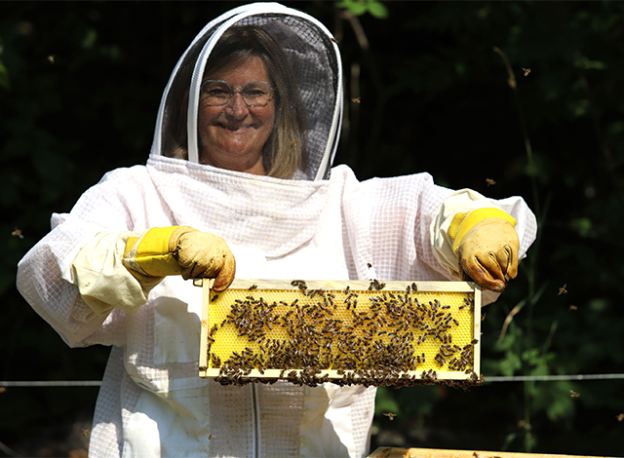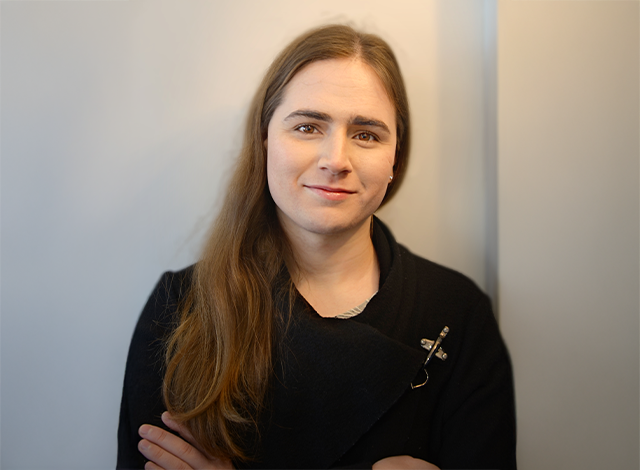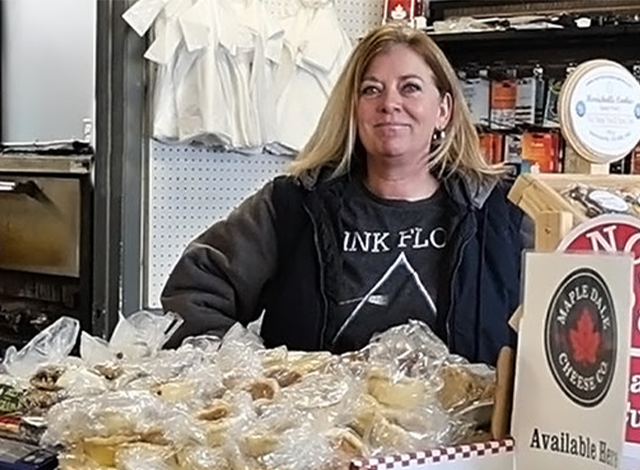LAURIE WEIR
In the heart of Lanark County, where the meadows are lush and the flowers bloom in a riot of colours, there’s a gentle hum that signifies more than just the arrival of summer. It’s the sound of bees, those tiny but mighty creatures that are nothing short of miraculous. And no one knows this better than Lanark County’s award-winning honey maker, Annelle Lalonde, who’s in her third year of beekeeping.
What inspired Annelle to start her journey with bees?
“I’ve always had a keen interest in beekeeping, and I love a good challenge!” she says. “I’ve always been fascinated by honeybees, and I wanted to contribute to the ecosystem while gaining a greater understanding of these important pollinators. Plus, I just love honey!”
Her story began with a call to the president of the Eastern Ontario Beekeepers Association, who helped her find reputable suppliers. “I spent the winter months reading everything I could about honeybees and beekeeping,” she recalls. Her sources included Tom Seely books, the University of Guelph Honey Bee Research Centre, and various beekeeping and honeybee biology books. With her new knowledge, she purchased equipment and two nuclei of bees to establish her apiary. “It was very exciting!”
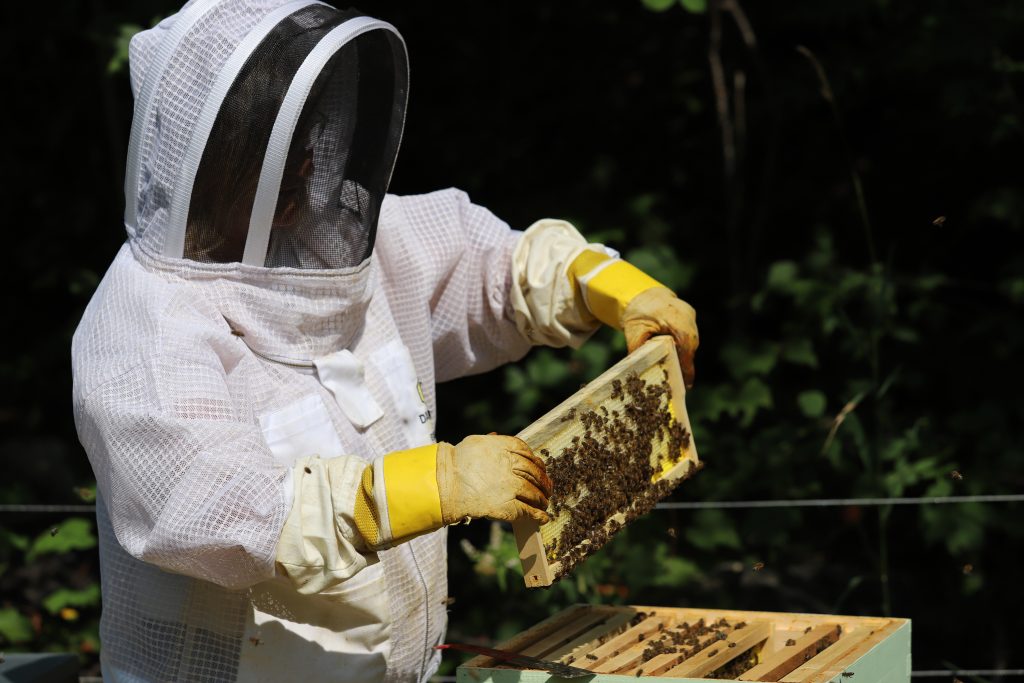
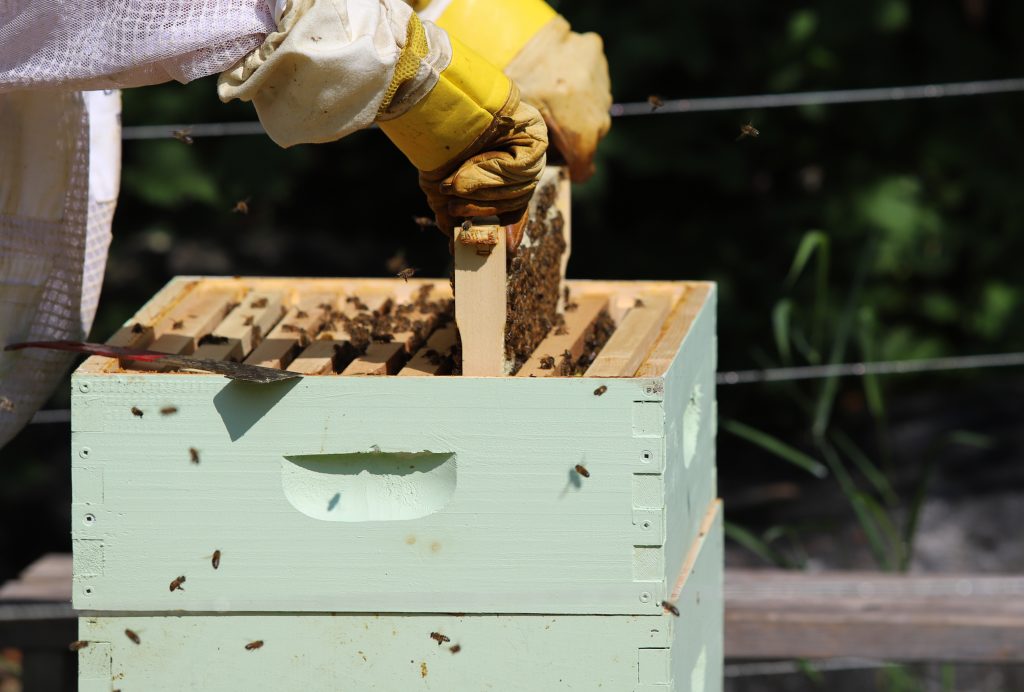
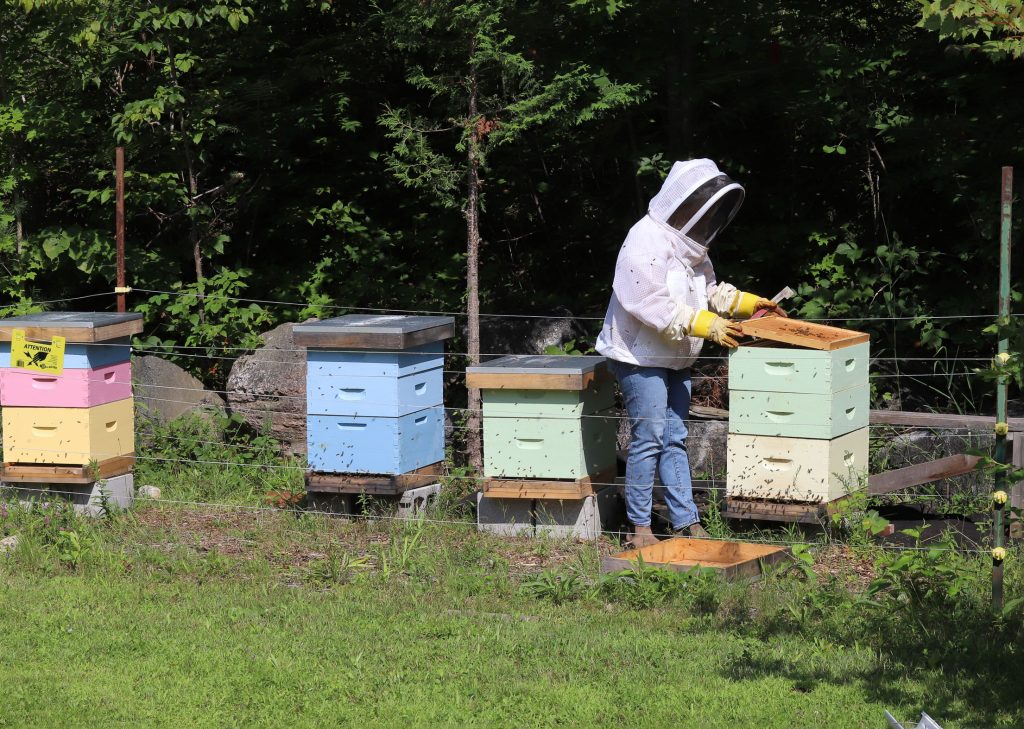
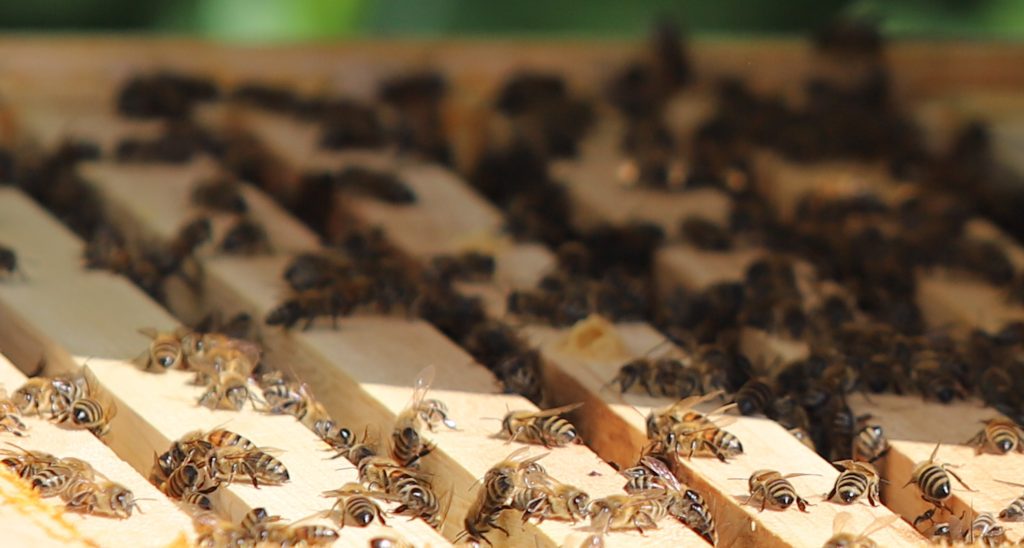
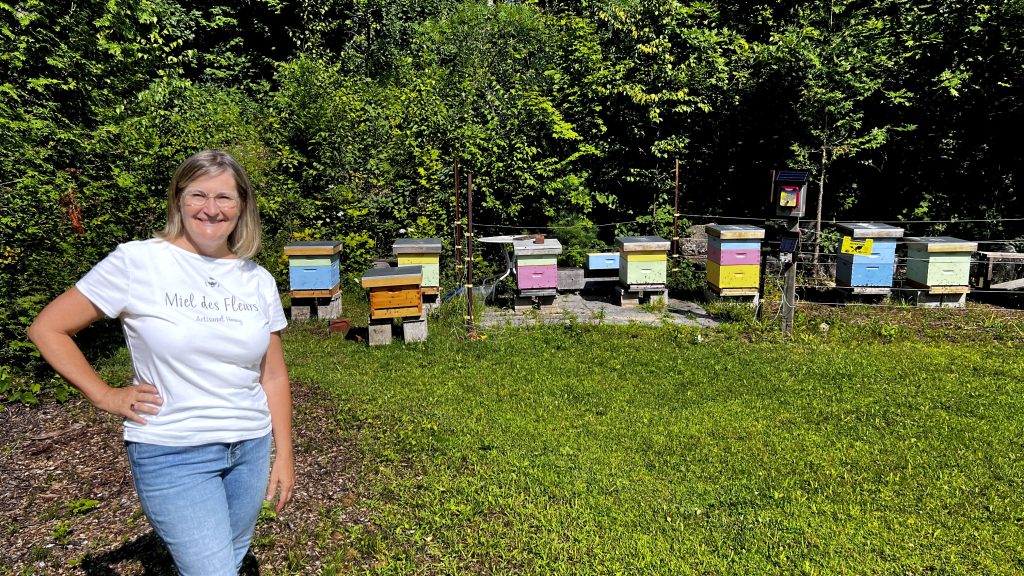
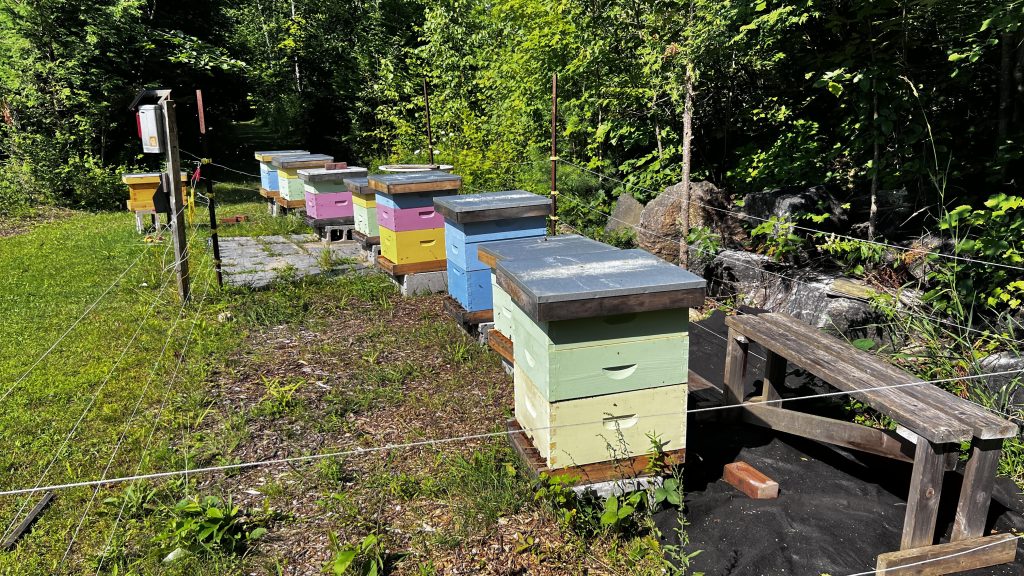
Annelle’s daily routine as a beekeeper varies through the year.
“Depending on the season there are different tasks,” she says. “In the summertime, for example, I gather my equipment such as my bee protective jacket, smoker, and hive tool to inspect the hives every seven to 10 days. I check for the presence of the queen and make sure there is enough space for the bees and the queen to lay her eggs. I add new frames or supers if necessary, and sometimes split the hive to provide sufficient space for the queen and worker bees. Recording of information is done after each inspection. I also check my equipment and hive boxes, build and paint new ones as required.”
Her hives are made from pine and she likes to give them a layer of colourful paint as it adds a bit of protection from the elements.
One of her unique practices is using organic treatments and placing her hives in vast fields of wildflowers. “Our honey is artisanal and hand-harvested,” she notes. Regular inspections and treatments, along with splitting hives when they get too crowded, ensure the health and well-being of her bees.
What sets Annelle’s honey apart?
“Our honey has a delicious floral taste. I describe it as ‘flowers in a jar,'” she says. Her honey has won first place at local and regional competitions in 2022 and 2023. “Winning those awards was ecstatic; I felt so proud of my bees. People are always impressed and usually buy a jar or two. Then they come back for more!”
The process of making and harvesting honey is intricate. Forager bees collect nectar from 50-100 flowers per visit, and it takes about two million flowers to produce one pound of honey. The nectar is stored in a special stomach and exchanged with other bees, whose enzymes break it down into glucose and fructose. The bees then fan their wings to reduce the moisture content before capping the honey in the cells. Harvesting involves removing bees, and wax, and using an extractor and gentle filtering.
Sustainability is a key part of Annelle’s beekeeping. “We split the hives in early spring to avoid swarming and increase our hive numbers. We don’t use chemicals or fertilizers on our plants and encourage others to do the same,” she says.
She also educates the community about the importance of bees and beekeeping. As a director of the Eastern Ontario Beekeepers’ Association, she volunteers at events and speaks to various groups, promoting the role of pollinators.
Over the past three years, Annelle’s business has grown from two hives in 2022 to 11 hives in 2023 with plans to have over 25 hives by 2025.
“I collaborate with other local businesses and sell at markets,” she says, “sharing information about honeybees and pollination is crucial.”
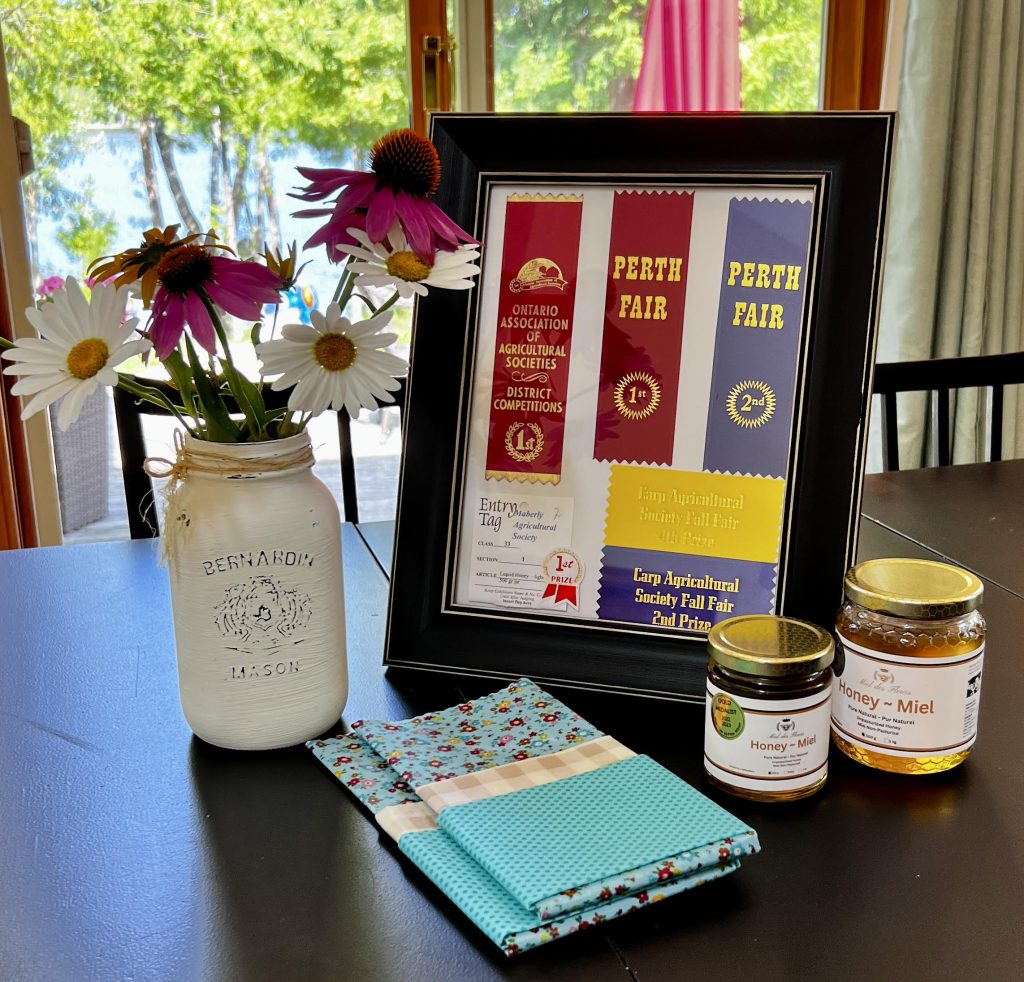
Her future goals include further increasing the number of hives and expanding into more retail stores and specialty food shops. She plans to introduce new products like beeswax food wraps, candles, creamed honey, and flavoured honey. “I hope to see advancements in beekeeping technology and more organic pest management options.”
What’s the most rewarding aspect of beekeeping?
“Seeing someone taste my honey for the first time and realizing how different it is from store-bought honey,” she says. “And when all my bees survive the winter, I dance in front of my hives in the spring!”
Memorable experiences include watching a bee emerge from her cell for the first time and spotting the queen, the majestic mother of all the bees.
Her advice for aspiring beekeepers?
“Talk to beekeepers, join an association, research, visit an apiary, and learn as much as you can before getting bees,” she says. “There is no other experience like opening a hive and seeing over 50,000 bees. It is a mesmerizing sight to see these incredible honeybees working in their hive, making honeycomb and honey.”
The next time you hear that familiar buzz or spread honey on your toast, take a moment to appreciate these tiny titans of nature. They’re not just insects; they’re the unsung heroes of our environment, tirelessly working to keep our world blooming and beautiful.

